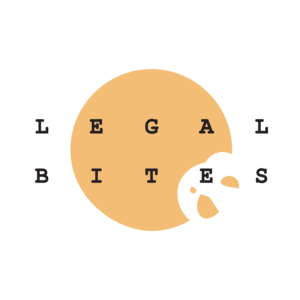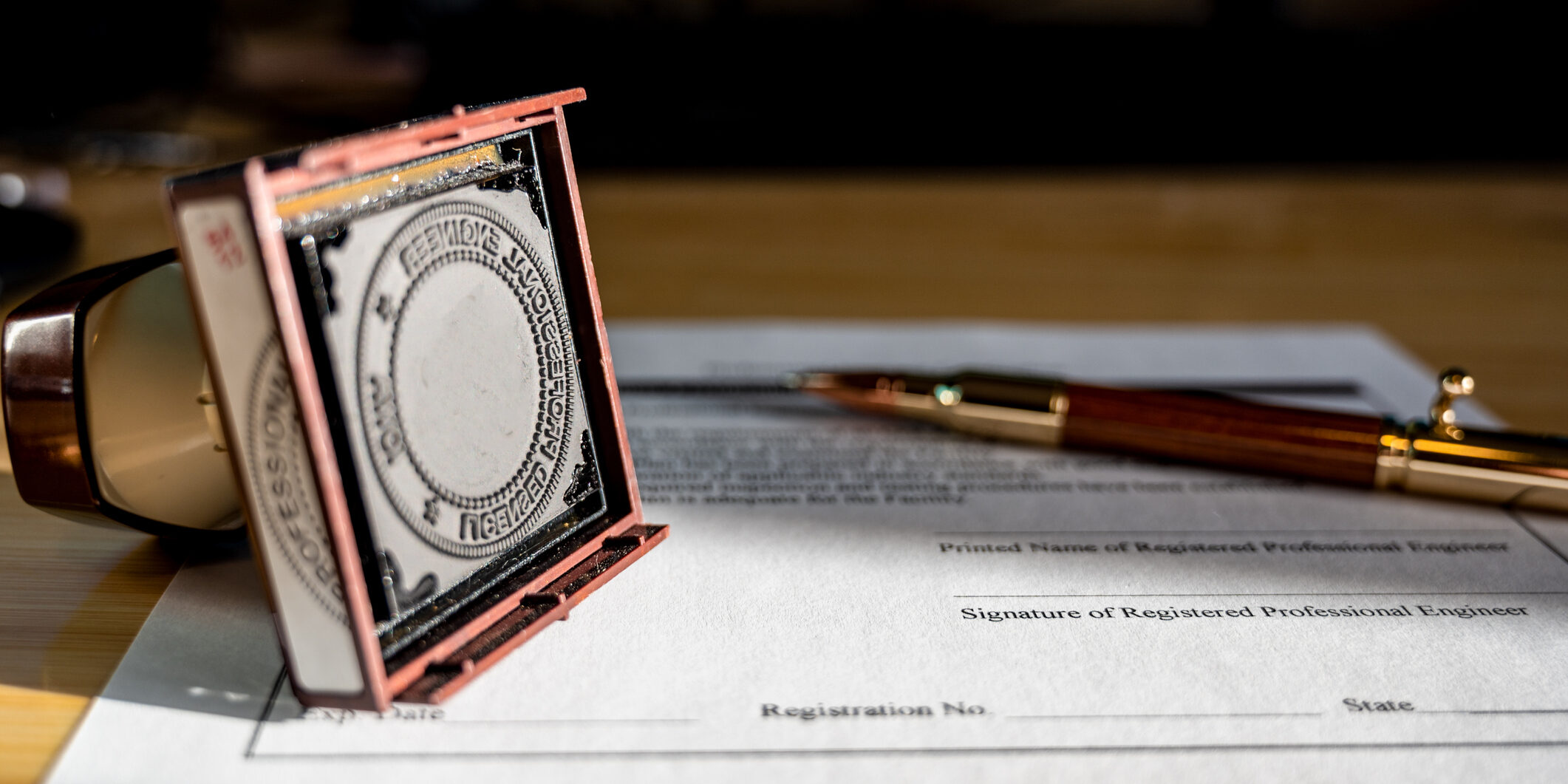
Understanding Signing and Sealing Requirements for Engineers and Architects

Navigating the rules and regulations surrounding signing and sealing drawings and other instruments of service (collectively "Work Product") as an engineer or architect can be complex, with variations based on project location, document type, and other project specifics. In this issue of Legal Bites, we attempt to demystify the signing and sealing rules of the state boards of engineering and architecture by walking you through some examples from states that are significant DG project locations, but first off, what does an engineering or architectural seal mean?
The act of signing and sealing Work Product signifies that (1) the work was prepared by the design professional or under the design professional's direct control or personal supervision; (2) the signing and sealing design professional is of the opinion that the documents meet usual and customary standards of practice; and (3) the documents are appropriate for review and approval by the applicable code enforcement official.
What Requires Signing and Sealing?
Signing and sealing drawings and specifications is generally mandatory on construction projects involving civil, structural, electrical, mechanical (as well as other engineering disciplines), or architectural services. Some state rules differentiate between public and private clients when stating whether Work Product needs to be signed and sealed whereas other states require that only Work Product being filed with a public authority gets signed and sealed. Inconsistencies also exist between states concerning which documents prepared by an engineer or architect need to be signed and sealed as demonstrated by the following rules from California, Georgia and Utah.
All electrical engineering plans, specifications, calculations, and reports (hereinafter referred to as "documents") prepared by, or under the responsible charge of, a licensed electrical engineer shall include his or her name and license number…All electrical engineering plans and specifications that are permitted or that are to be released for construction shall bear the signature and seal or stamp of the licensee and the date of signing and sealing or stamping. All final electrical engineering calculations and reports shall bear the signature and seal or stamp of the licensee and the date of signing and sealing or stamping…(CA Electrical Engineering Rule 6735.3. Signing and sealing of electrical engineering documents)
The term, "documents," as used herein shall mean engineering and/or land surveying work issued in the form of plans, drawings, maps, surveys, reports, specifications, design information, and calculations…(GA Engineering Rule 180-12-.02 Sealing of Documents)
Any final plan and specification of a building prepared by or under the supervision of the licensed architect shall bear the seal of the architect when submitted to a client, or when submitted to a building official for the purpose of obtaining a building permit…(UT Architecture Rule 58-3a-602. Plans and specifications to be sealed)
What About Digital Sealing?
With the shift by virtually every industry, including construction, to creating documents by exclusively electronic means, many design professionals wonder what is required to sign and seal electronic documents. Does it mean that they can scan an impression of their seal and affix the pdf image that results onto Work Product? What about their signature? Can this be a pdf image, too? As demonstrated below, we see variation amongst the states here, too. However, most states have moved toward requiring the use of a secure tool that maintains the security of the design professional signing and sealing, and the authenticity of the Work Product. Watch for a future issue of Legal Bites wherein we will introduce you to a state-by-state reference tool for determining whether digital sealing is required.
Documents to be electronically transmitted beyond the direct control of the licensee that are signed using an electronic signature shall contain the authentication procedure in a secure mode and a list of the hardware, software and parameters used to prepare the document(s). Secure mode means that the authentication procedure has protective measures to prevent alteration or overriding of the authentication procedure…The term "electronic signature" shall be an electronic authentication process that is attached to or logically associated with an electronic document. The electronic signature shall be:
(a) Unique to the licensee using it;
(b) Capable of verification;
(c) Under the sole control of the licensee; and
(d) Linked to a document in such a manner that the electronic signature is invalidated if any data in the document is changed. (GA Engineering Rule 180-12-.02 Sealing of Documents)
When a digital Signature is applied to an Instrument of Service, it must have an electronic authentication process attached to it that is uniquely associated with the Registrant, can be authenticated by the recipient, and is uniquely linked to the underlying documents in a manner that will invalidate the digital Signature if any part of the document is changed. (MA Engineering Rule 5:03: Professional Seal)
…Electronically generated seals and signatures are acceptable. It is the responsibility of the licensee to provide adequate security when documents with electronic seals and electronic signatures are distributed….(UT Architectural Rule R156-3a-601. Architectural Seal - Requirements)
Other Sealing Idiosyncrasies
Beyond what needs to be signed and sealed and rules around digital sealing of Work Product, individual state boards of engineering and architecture can impose other requirements related to signing and sealing Work Product. For example, some states require that in addition to the seal, signature and date affixed to Work Product by the individual signing and sealing, information regarding the firm they are associated with or employed by must also be included on Work Product. The following is the State of Georgia's rule on this point.
The registrant shall seal, sign and date and provide COA name, Authorization Number and expiration date of the COA all original final documents which are issued to a client or any public agency. (GA Engineering Rule 180-12-.02 Sealing of Documents)
The rules often address how to sign and seal Work Product that consists of multiple sheets. Most states require that each sheet be signed and sealed; however, Georgia provides another option in the following rule.
If necessary due to number of sheets, in lieu of providing a seal, signature, date, and COA information on each drawing sheet, a summary sheet may be included in the form of a clearly drafted table or other format that identifies each registrants seal, signature, date, and COA information and which includes a narrative that clearly describes the element of work for which each registrant is responsible and indicates the most current version of each sheet. This summary sheet shall be included within the final documents. If a document is sealed, signed and dated and contains the entity's COA information by more than one registrant, the portion of the work for which each registrant is responsible shall be clearly noted.
Whose Responsibility is it to Comply with these Rules?
The responsibility to meet the rules regarding signing and sealing Work Product is among the most important and critical responsibilities of a design professional. Moreover, a seemingly minor violation of the rules can result in disciplinary action by a professional board. It is the responsibility of the DG design professional acting in responsible charge of the professional services being delivered on a DG project (i.e., civil, structural, mechanical, electrical, architectural) and signing and sealing DG Work Product to verify the state-specific signing and sealing requirements applicable to a project.
Fortunately, this information is readily available on all state licensing boards' websites. As such, we encourage all DG engineers and architects to keep apprised about the rules of the professional boards in the states where they are registered not only concerning the application of their seals on Work Product, but in other areas, as well, which we will cover in future issues of Legal Bites.





